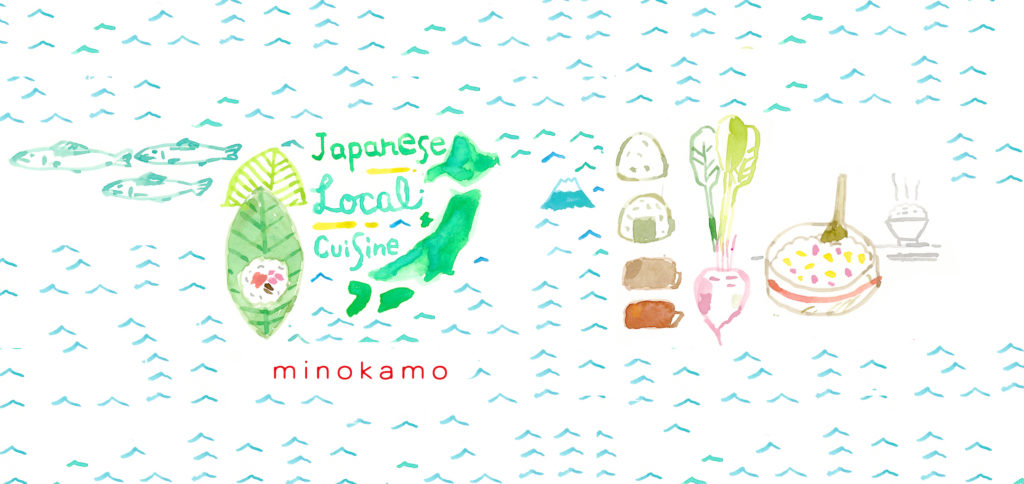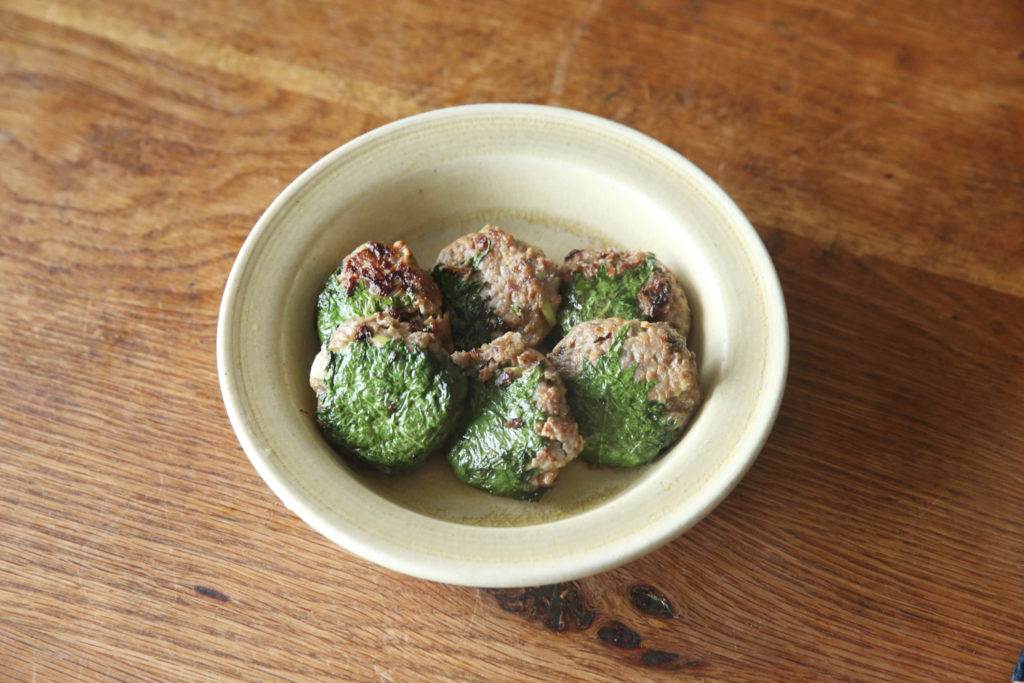
Ingredients
3 iwashi / sardines (about 180 g when filleted; can be substituted with aji / horse mackerel, sanma / Pacific saury, or saba / mackerel)
1 tbsp miso
4 slices ginger with peel
6 aojiso / green shiso leaves
1 tbsp olive oil
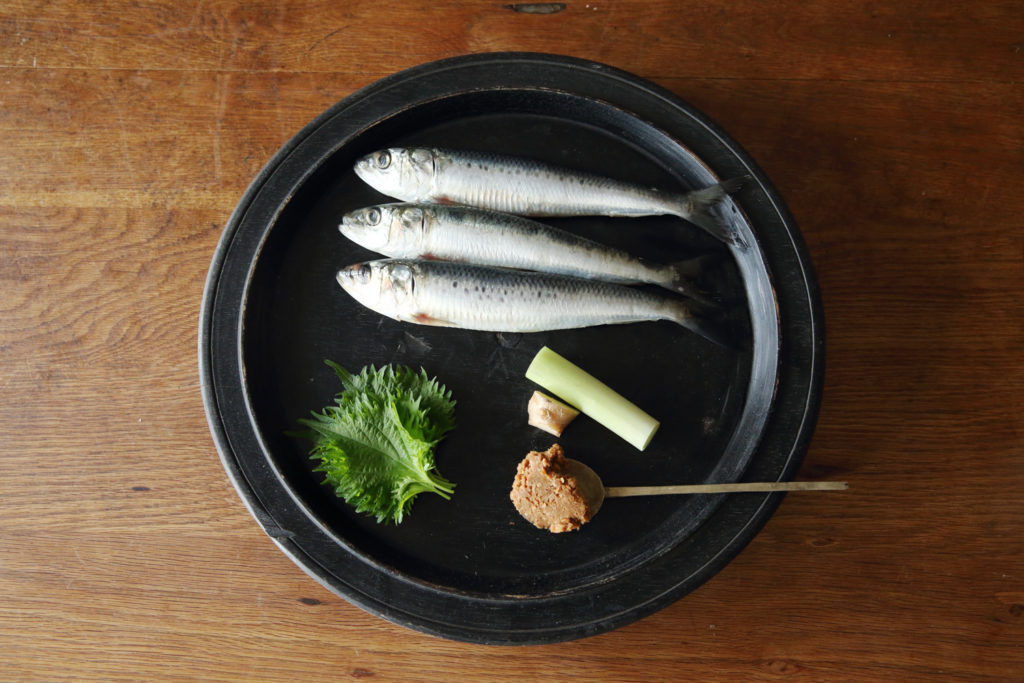
How to make
1. Remove the head and fillet the sardines. The backbone can be removed with the fingers. Finely chop the ginger.
* The sardines will be minced in the end, so don’t worry if you aren’t great at dressing fish.
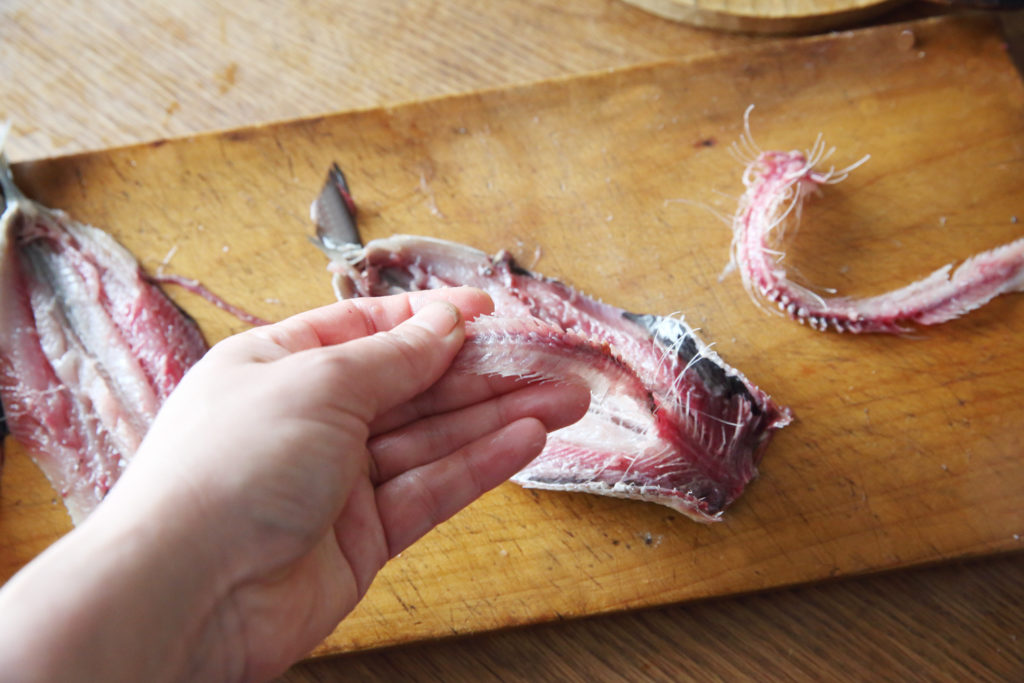
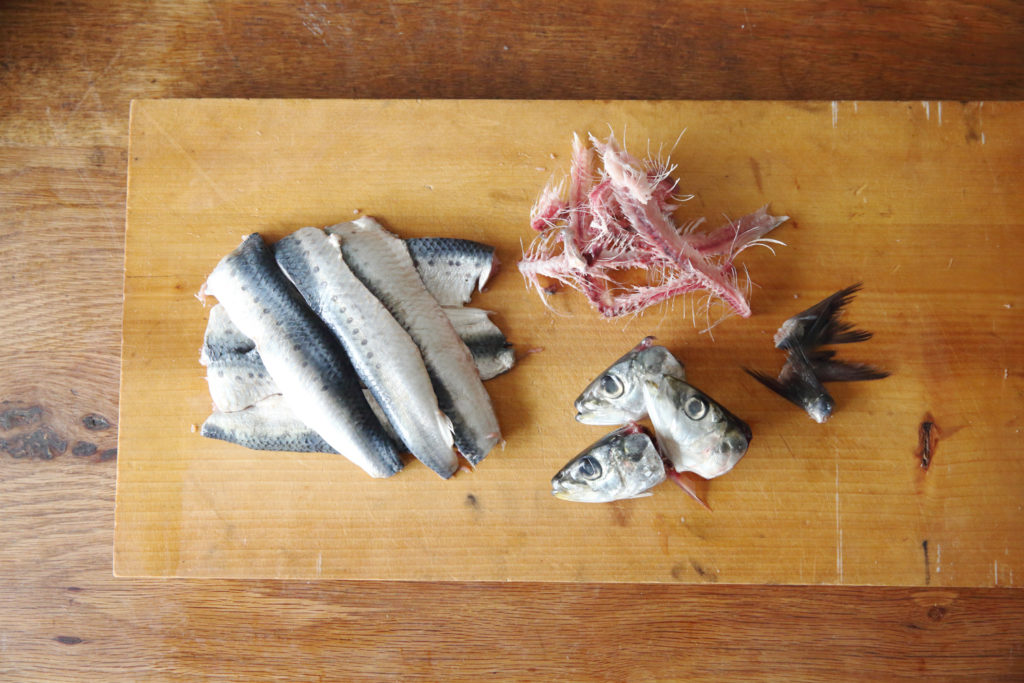
2. Cut the filleted sardines into 1 cm strips, and then pound with the knife to mince. Add the miso and ginger, and continue pounding to mix.
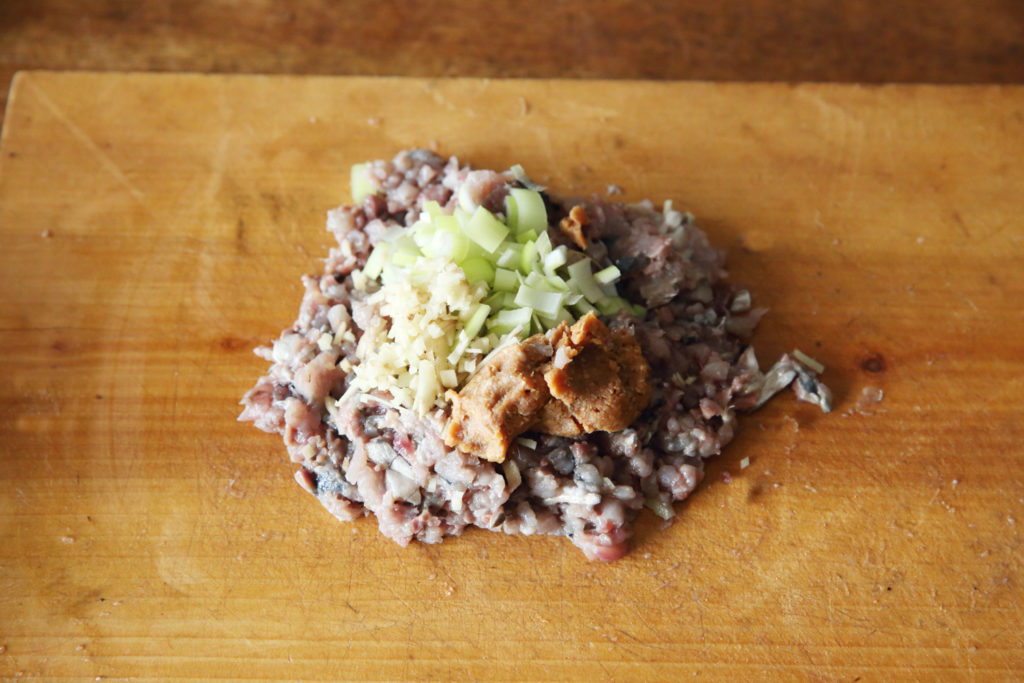
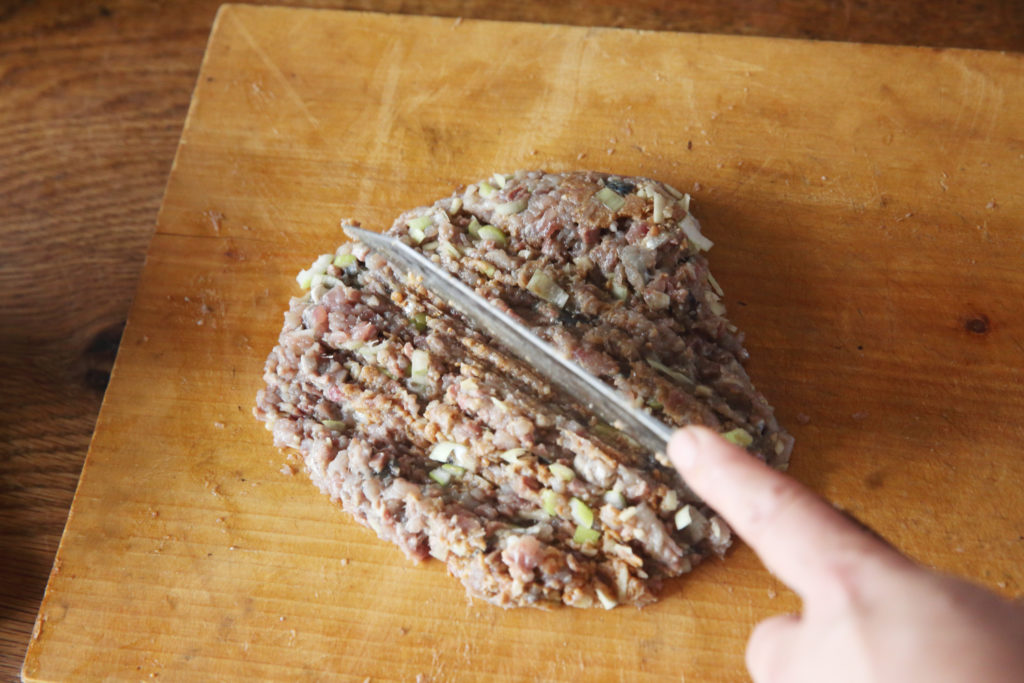
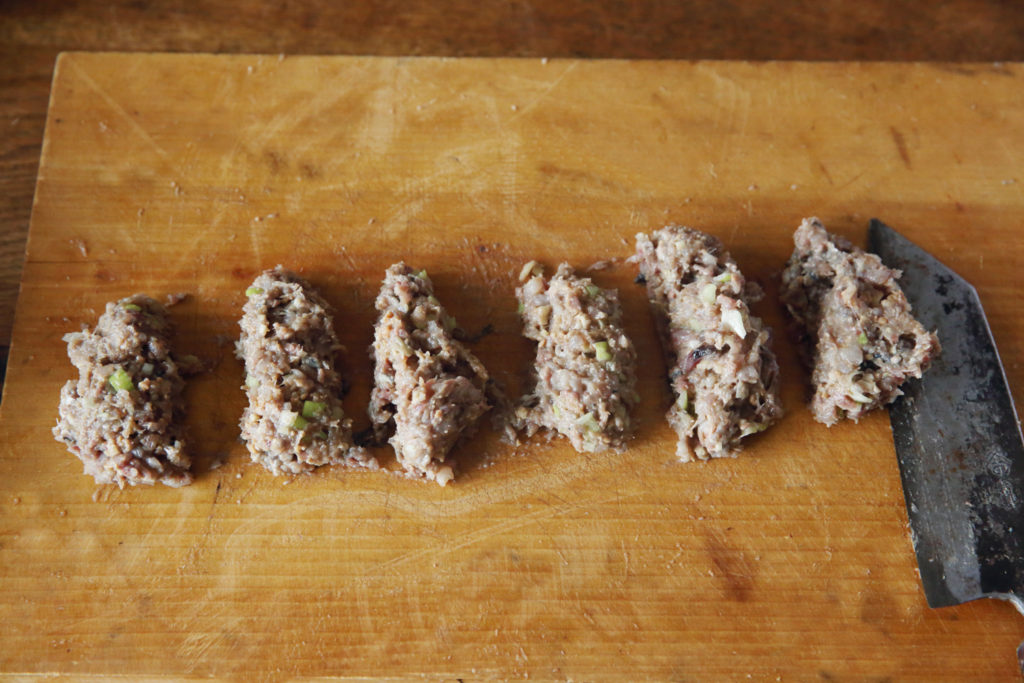
3. When (2) turns sticky, shape into patties by hand, and stick a green shiso leaf on the surface of each patty.
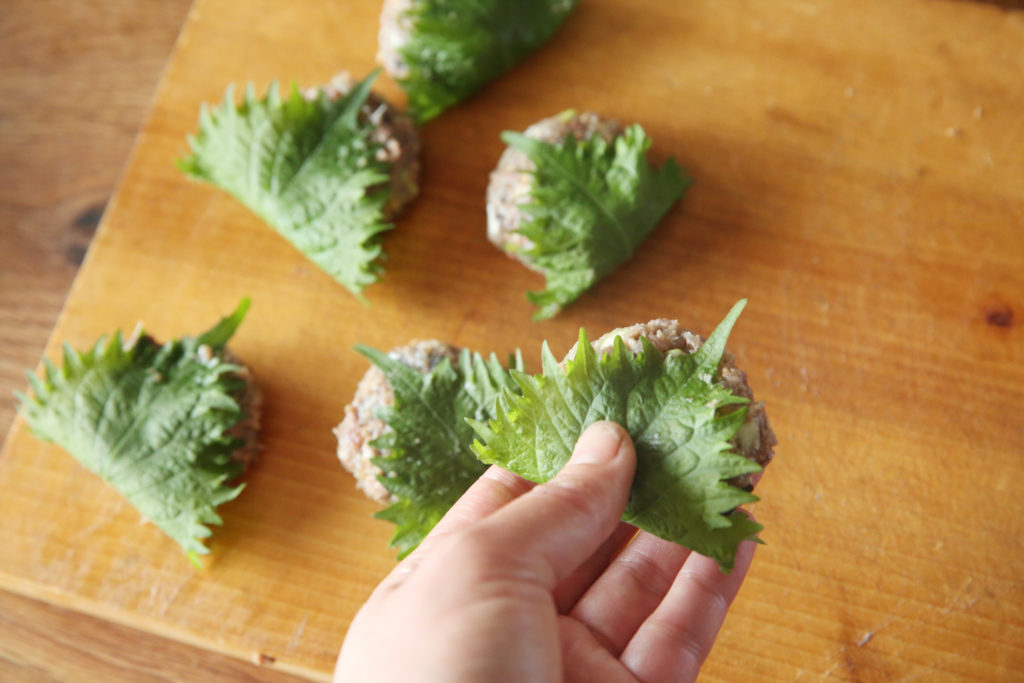
4. Oil and heat a skillet. Cook both sides over low-medium heat.
* To make namero, skin the sardines.
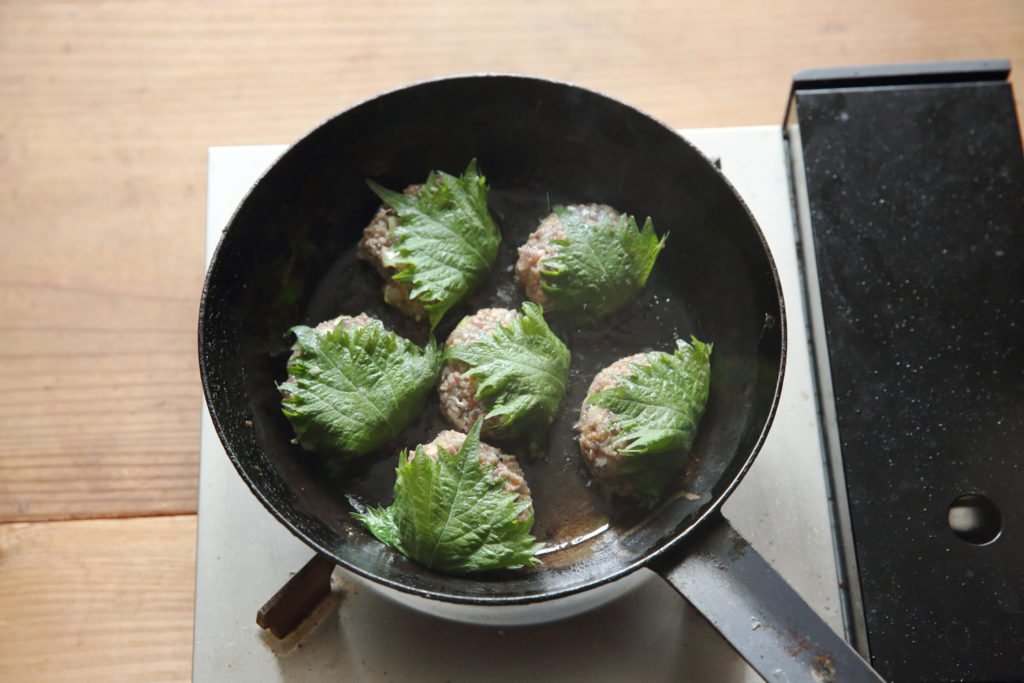
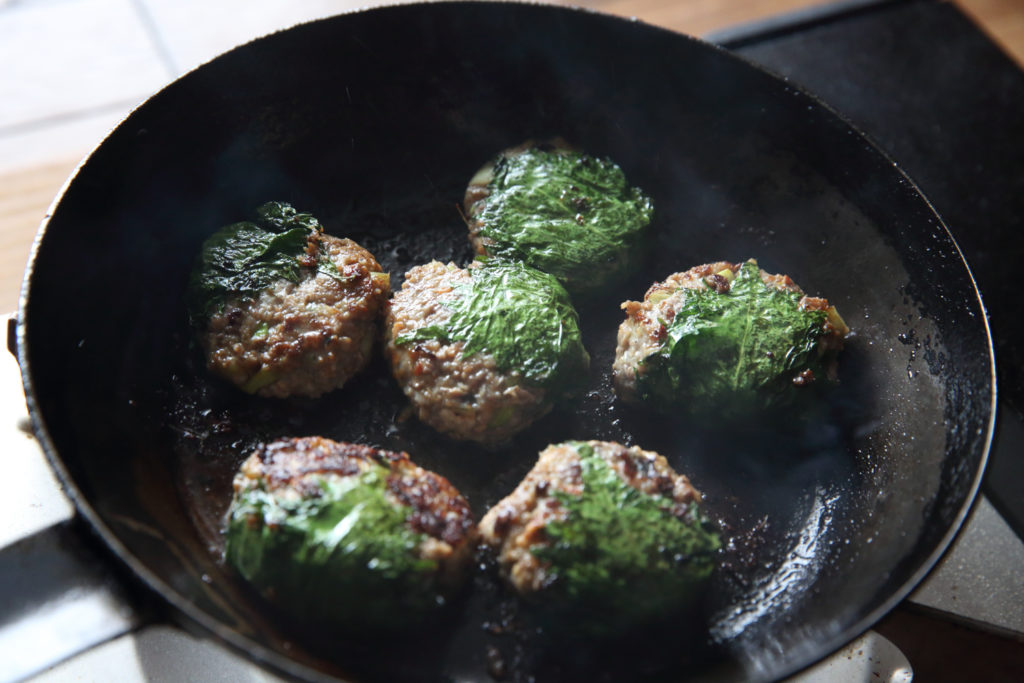
Sanga-yaki is a fisherman’s recipe from the Boso Peninsula in Chiba Prefecture, abundant with delectable fresh seafood. I learned the recipe from a fishmonger in Kisarazu. Quickly dress the freshest horse mackerel, or aji, combine with seasonings and miso, and pound with a knife to mince—this makes namero, a local dish of Chiba Prefecture. The sticky sashimi is appetizing paired with either rice or sake. Originally made by fishermen on their boats, the dish was bowl-licking good, and so it got its name namero (nameru is Japanese for “lick”).
This recipe forms the base of sanga-yaki. Shape the minced horse mackerel into a patty, attach a green shiso leaf, cook in a skillet, and voila—you’ve got a well-balanced dish with the flavors of blueback fish, miso, and seasonings. The story goes that when the fishermen went to work in the mountain, they carried leftover namero and cooked it in abalone shells, and this was the beginning of mountain (san) hut or house (ga) pan-fry (yaki). Besides namero and sanga-yaki, deep-fried horse mackerel (aji fry) is another one of my favorite fish dishes from Chiba.
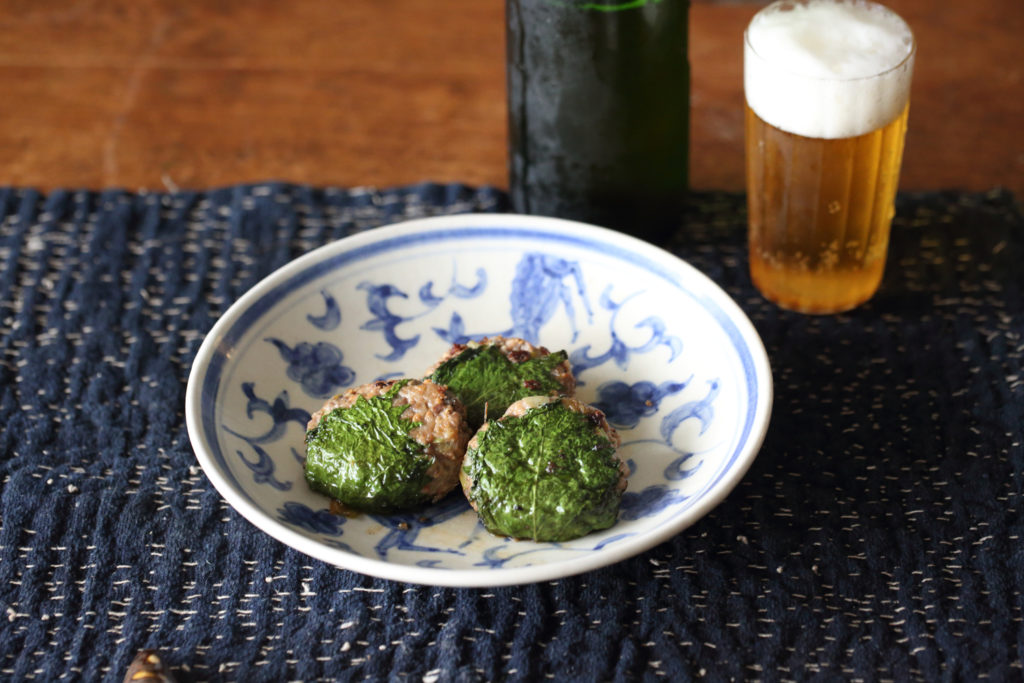
minokamo | Cookery expert / Photographer
Gifu Prefecture native minokamo’s culinary adventures were inspired by her fond childhood memories of cooking with her grandmother. She researches, writes about, and arranges regional dishes that capture, through their preparation and presentation, sensory enjoyments inspired by local climate, history, and lifestyles. Ryori tabi kara tadaima(Back from a Cooking Journey; Fudosha), published in September 2020, is a collection of recipes from minokamo’s visits to homes up and down Japan. Kona 100 mizu 50 de tsukuru suiton (Suiton Recipes—Flour 100 Water 50; Gijutsu-Hyoron) is now out.
